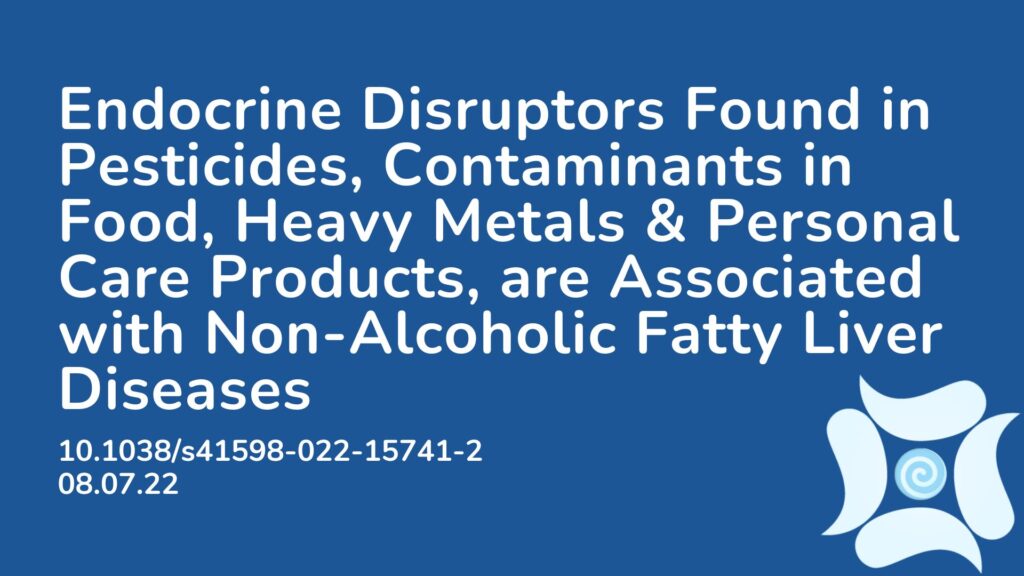Summary: Endocrine-disrupting chemicals (EDCs) have shown to be problematic in literature for metabolic and hormonal signaling pathways in humans and are being more commonly linked to common illnesses such as diabetes, obesity and increased liver enzymes. EDCs are mostly synthetic and found in pesticides, metals, additives, food and personal care products. The purpose of this cross-sectional nation wide nutrition survey was to determine the association between EDC exposure and non-alcoholic fatty liver disease (NAFLD). The results showed that EDC exposure was associated with NAFLD, with some EDCs showing a linear dose-dependent relationship. Given that EDCs are still heavily used in agriculture, monitoring for NAFLD appears necessary.
Abstract:
While endocrine disruptors are emerging as a cause of nonalcoholic fatty liver disease (NAFLD), little is known about the link between NAFLD and organochlorine pesticides (OCPs), one of the endocrine disruptors. We retrospectively analyzed the U.S. National Health and Nutrition Examination Survey 2003–2004 and compared the baseline demographics in individuals according to the presence of NAFLD (fatty liver index [FLI] ≥ 60). Logistic regression analysis was performed to determine whether OCP concentration affected NAFLD prevalence and subgroup analyses regarding NAFLD-related variables and advanced hepatic fibrosis (FIB-4 ≥ 2.67) were performed. Of the 1515 individuals, 579 (38.2%) had NAFLD. Oxychlordane showed concentration-dependent risk for NAFLD (OR 3.471 in fourth quartile [Q4]; 95% CI 1.865–6.458; P = 0.007). p,p′-DDE and trans-nonachlor showed similar trends without statistical significance. Conversely, mirex showed the lowest risk for NAFLD in the highest concentration quartile (OR 0.29 in Q4; 95% CI 0.175–0.483; P < 0.001). Oxychlordane showed the most pronounced association with the levels of each component of FLI and liver enzymes. None of the OCPs were significantly associated with advanced fibrosis. In conclusion, among OCPs, exposure to oxychlordane showed the most prominent impact associated with NAFLD.
Article Publication Date: 08.07.22
DOI: 10.1038/s41598-022-15741-2



